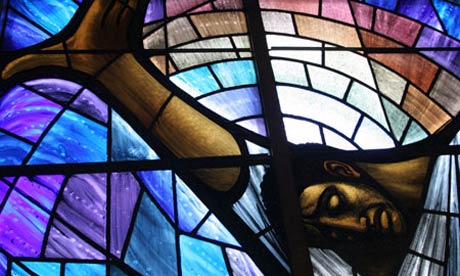In 1963, a racist bomb attack on an Alabama church that killed four black girls prompted a Welsh artist to make a profound gesture
When Reverend Andre Reynolds, minister of music at the 16th Street Baptist church in Birmingham, Alabama, looks out to the congregation for inspiration, he occasionally lifts his eyes over the pews, beyond the balcony and sets his gaze on the Wales window.
"I think it's wonderful that people halfway around the world should choose to affiliate with both the accomplishments and the disappointments of African Americans," he says. "It just reminds us that the world is smaller than we think, and that there are brothers and sisters somewhere else who thought about us."
Racist bombings were not extraordinary in Birmingham at that time. There had been more than 50 in the city during the civil rights era, all unsolved, earning it the nickname Bombingham among African Americans. And it was hardly a surprise that the assailants chose this church. Throughout the previous six months it had become the organising centre for the local civil rights movement, which had grown ever more strident.
Back in Birmingham, African Americans assumed nothing would be done.Four men, who formed a splinter group from the Klan, called the Cahaba Boys, were identified as complicit in the bombing. It was 14 years before Robert Chambliss, a Klan member, was brought to justice: it would take 37 years before another, Thomas Blanton, was put behind bars. Bobby Frank Cherry was jailed for life in 2002. Another man died before charges were brought.
When Reverend Andre Reynolds, minister of music at the 16th Street Baptist church in Birmingham, Alabama, looks out to the congregation for inspiration, he occasionally lifts his eyes over the pews, beyond the balcony and sets his gaze on the Wales window.
"I think it's wonderful that people halfway around the world should choose to affiliate with both the accomplishments and the disappointments of African Americans," he says. "It just reminds us that the world is smaller than we think, and that there are brothers and sisters somewhere else who thought about us."
Racist bombings were not extraordinary in Birmingham at that time. There had been more than 50 in the city during the civil rights era, all unsolved, earning it the nickname Bombingham among African Americans. And it was hardly a surprise that the assailants chose this church. Throughout the previous six months it had become the organising centre for the local civil rights movement, which had grown ever more strident.
Back in Birmingham, African Americans assumed nothing would be done.Four men, who formed a splinter group from the Klan, called the Cahaba Boys, were identified as complicit in the bombing. It was 14 years before Robert Chambliss, a Klan member, was brought to justice: it would take 37 years before another, Thomas Blanton, was put behind bars. Bobby Frank Cherry was jailed for life in 2002. Another man died before charges were brought.
